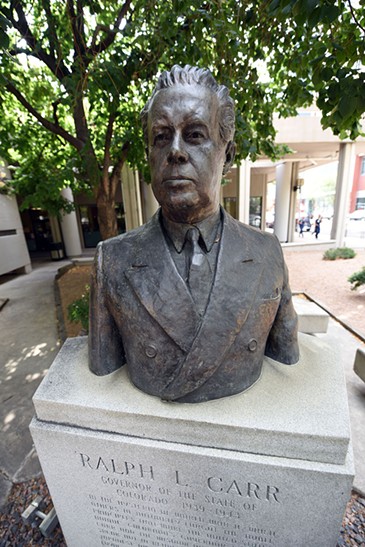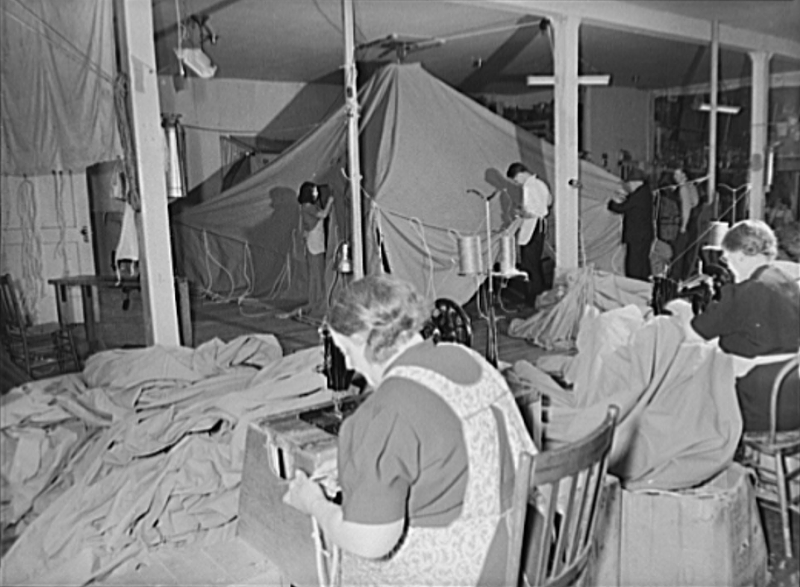In Colorado, Lakewood fills that bill, even if most people don’t realize it. The Denver Ordnance Plant, now the Federal Center, which is home to government offices, was a munitions plant on the land that would eventually become Lakewood.
Built in 1941, the Ordnance Plant could generate ten million rounds of ammunition per day and was one of the leading producers of .30-caliber ammunition in the country. When World War II ended and ammunition production wound down, many of those who had moved to the area for work during the war stuck around and became citizens of Lakewood, which was incorporated as a city in 1969 and now has a population of over 155,000.
That history and the Denver area’s other ties to World War II could be recognized by the federal government as part of the National Park Service’s World War II Heritage Cities program, in which the park service recognizes one site in each state or territory for its World War II history.
Poppie Gullett is the chair of Lakewood’s Historic Preservation Commission, but her day job is as a historian at the NPS Denver regional office. At a conference in April, one of her NPS colleagues from the Washington office asked if she knew of any potential cities in Colorado that could fit the designation.
“I was, like, would it be crazy to say the one I'm on the commission for would be a good one?” Gullett remembers thinking. The more she thought about it, however, the more she was convinced that a tandem of Denver and Lakewood would show the "story being told here."

Governor Ralph Carr is honored for his opposition to Japanese internment camps with a statue in Denver's Sakura Square.
Anthony Camera
Gullett’s idea is to focus a World War II Heritage bid on the history of Japanese-American internment. Many people know of Camp Amache, where thousands of Japanese American citizens were incarcerated in southeastern Colorado, but not as many are aware of Governor Ralph Carr’s staunch opposition to internment and refusal to incarcerate any Coloradans. (Despite Carr's efforts, the federal government still incarcerated Japanese Americans on land it purchased or repossessed from private citizens in Colorado.)
In Denver’s Sakura Square, the last remaining part of what was once an active Japantown, Carr is commemorated with a statue — and public commemoration is one of the requirements to become a National Park Service World War II Heritage City.
There can be a maximum of one heritage site per state or territory, but joint applications are allowed in jurisdictions that share a border, which Gullett hopes to create with Denver and Lakewood.
According to NPS's explanation of the requirements, cities must have contributed to the World War II home-front effort to qualify, as Lakewood did with the Denver Ordnance Plant. Denver is home to the former Lowry Air Force Base, where pilots trained for the war; the presence of such bases is another accepted contribution.
To fit the commemoration requirement, cities can include local veterans' organizations, memorials to those who lost their lives in the war, cultural activities and the preservation of historic facilities and sites. Parks, markers and museums also count for that requirement.
Nominations for this year close at the end of May, so Gullett's Lakewood group is targeting 2025 to apply. Part of the work ahead will involve collaboration between two different city staffs.
Lakewood’s Historic Preservation Commission members have mentioned the possible designation to their peers in Denver, but time hasn’t been set aside yet to discuss a potential partnership. Still, both Gullett and the Denver landmark team are interested in working together.
"Lakewood has reached out to potentially collaborate on applying for this designation," says Alex Foster, a spokesperson for Denver's Landmark Preservation department. "On our end, there is interest in moving forward, but conversations are still in the very early stages."
The designation doesn’t earn cities additional federal funding, but it is a rare honor — there are currently just thirty World War II Heritage Cities— and a way to showcase a metro area's history.
“It would be my hope that it would spur more conversation locally of 'How can we celebrate this?'” Gullett says. “And maybe there's more conversation about the role Colorado played in Japanese incarceration, and more conversation about the Ordnance Plant and its relationship with the development of Lakewood.”
According to the local historian, the Ordnance Plant “completely changed the nature of Lakewood,” which had been agricultural rather than industrial before the plant’s inception.
If Denver were to be part of the application, the Rocky Mountain Arsenal would be another site for discussion, as it was a U.S. Army chemical manufacturing facility during World War II and is now a designated national wildlife refuge. Denver was home to a handful of manufacturing plants for military equipment and naval shipbuilding, as well.
Additionally, Lakewood’s William F. Hayden Green Mountain Park served as an artillery range during World War II. As recently as 2019, the federal government was still working to find and remove unexploded artillery shells from the area.
Though those elements of history are impactful, stories of industrial might and scientific research are represented in other World War II heritage cities. Gullett believes including more information about Japanese American internment, its harms and Carr’s resistance would set Colorado’s application apart.
After mentioning that aspect of the history to her colleagues at the NPS's D.C. office, she could tell they were excited.
“We have that traditional war industry thing going on, but we also have this broader, bigger story that needs to be told, and I just think the two sides together make a really strong nomination," she adds.
By next spring, she’s hoping to get Denver and Lakewood on board for an official application, which would require approval from the mayors of both cities.












